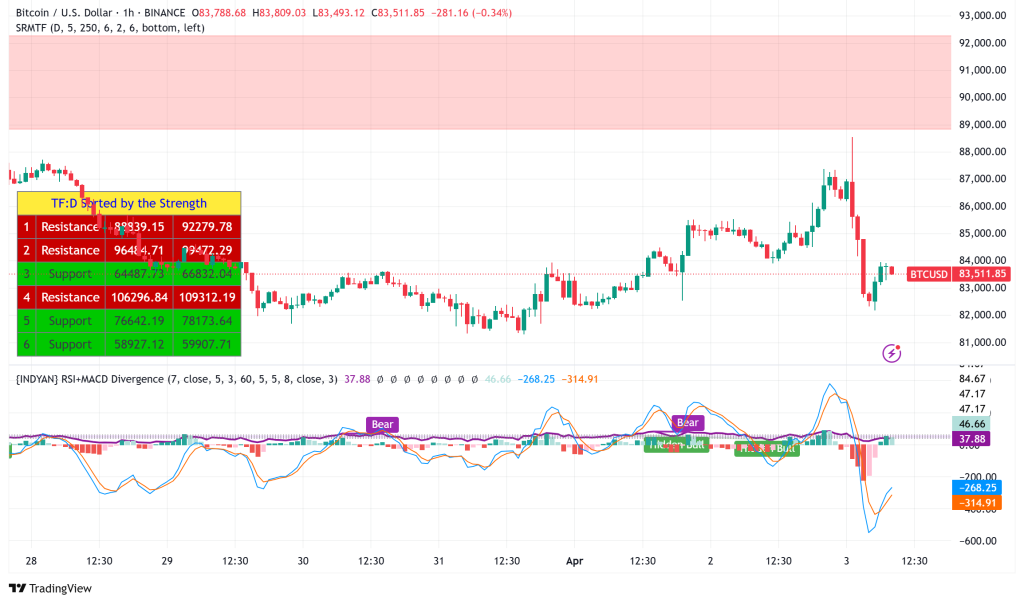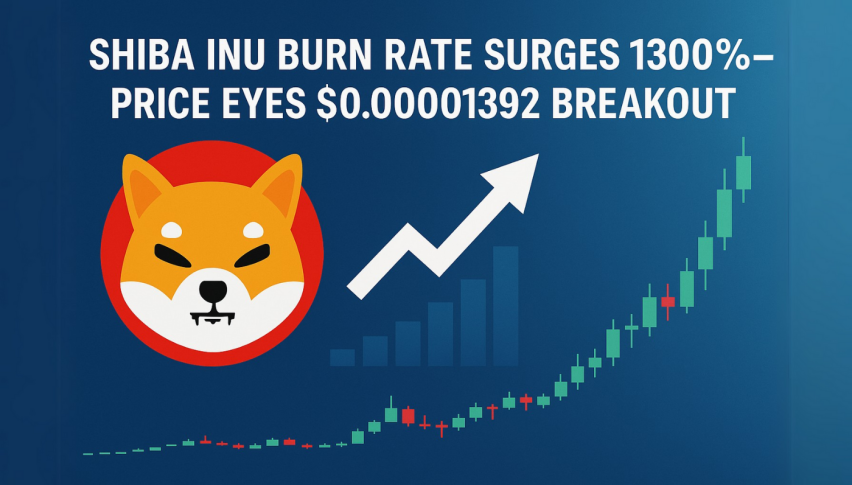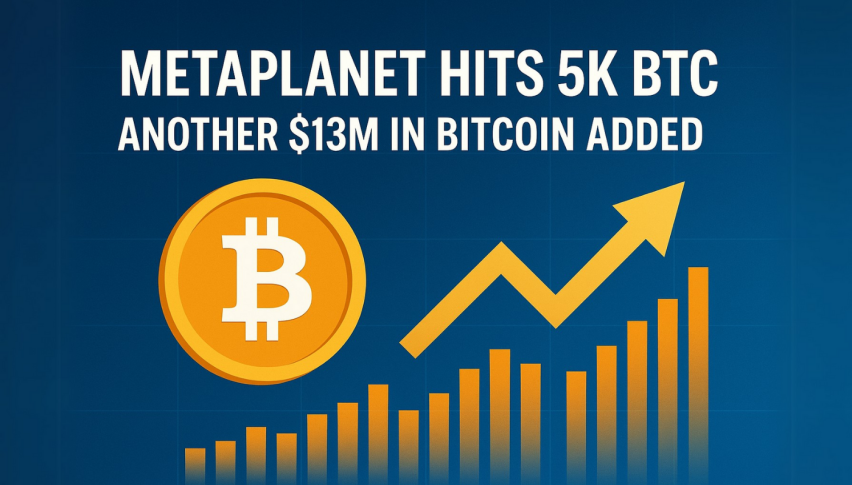Bitcoin Drops to $83,000 as Trump’s Tariffs Trigger Market-Wide Sell-Off: Technical Analysis Points to Key Support Levels
Bitcoin (BTC) has experienced a notable downturn, falling to the $83,000 mark and registering a 1.2% loss in the past 24 hours. This decline

Live BTC/USD Chart
Bitcoin (BTC) has experienced a notable downturn, falling to the $83,000 mark and registering a 1.2% loss in the past 24 hours. This decline coincides with a broader sell-off across the cryptocurrency market following the announcement of new reciprocal tariffs by United States President Donald Trump.

The tariffs, which include a baseline 10% levy on all imports and 25% on foreign-made cars, have sparked concerns about global trade and risk sentiment, impacting both traditional and digital asset markets.
Trump’s Reciprocal Tariffs Trigger Short-Term Crypto Market Correction
One of the biggest tariff deployments in American history, President Trump presented a thorough worldwide tariff proposal during this event that will affect 185 countries. The proposal calls for a baseline 10% tax on all imports, a 25% tariff on foreign-made cars, and reciprocal duties computed at 50% of the rates used by other nations on American exports.
Japan will pay a 24% charge on its exports to the United States; the European Union will be subject to a particularly sharp 20% tariff on goods from every member nation. The car tariffs are scheduled to start on Thursday; the baseline tariffs will start on Saturday; the reciprocal tariffs start on April 9.
Long-term Holders Show Resilience Despite Market Fluctuations
On-chain statistics from Glassnode show, notwithstanding recent price volatility, that the mechanics of Bitcoin’s present market differ greatly from past cycles. With cost bases ranging from $3,600 to $69,000, investors who bought Bitcoin between 2020 and 2022 have mostly kept their positions even as the value of the coin has shown great fluctuation.
Although from its peak in November 2024 the share of wealth held by these investors dropped by 3%, it still shows historically high levels. This contrasts with the behavior shown in past market cycles, where short-term holders (STHs) usually owned 70–90% of the wealth of the network close to cycle tops. With around 40% of Bitcoin’s network wealth currently held by STHs, less speculative activity in the present market seems to be implied.
Further suggesting that less investors are selling or shifting their assets are declining Bitcoin exchange inflows, two-year low. This change toward longer-term holding strategies could be helping to produce a more measured market than in past Bitcoin cycles.
Bitcoin Fear & Greed Index Approaches Neutral Territory
Popular attitude barometer kept by Alternative, the Bitcoin Fear & Greed Index, now shows 44, a little increase over yesterday’s reading of 34. This puts market mood only three points short of the neutral zone (47-53), implying that with Bitcoin’s comeback to $85,000 severe panic has disappeared.
Recent swings in the index have been notable; after the price collapse in late March, it approaches acute anxiety (25 and under). Such times of anxiety have historically sometimes followed market lows, which would help to explain Bitcoin’s current price comeback.
Depending on how markets continue to process the new tariff policy and other general economic reasons, Bitcoin could see equal possibility of movement upward or down in the near term, with sentiment no more strongly biassed in either direction.
BTC/USD Technical Analysis: Price Volatility Reflects Market Uncertainty
The price swings of Bitcoin BTC/USD have been especially unpredictable following the tariff declaration. BTC swiftly reversed to establish a low of $82,141 after reaching $89,042 in recent trading, therefore highlighting the current market volatility. Right now, the bitcoin is trading close to its 100-hour Simple Moving Average—that is, around $83,500.
Technical markers point to Bitcoin as at a turning point. While the Relative Strength Index (RSI) stays below the 50 level, suggesting that sellers keep only minor influence over the market in the medium term, the hourly MACD (Moving Average Convergence Divergence) is losing momentum in bearish territory.
Positively, Bitcoin encounters instant opposition close to $84,000; its main obstacle is $85,000. Should the price break over the $85,550 level—which denotes the 50% Fibonacci retracing of the current fall—more higher momentum toward $86,800 or perhaps $88,500 could result. Failure to cross the $85,000 barrier, however, might set off fresh selling pressure, hence driving Bitcoin toward support levels of $82,200, $81,350, and finally the psychologically significant $80,000 mark.
Impact of Trump’s Tariffs on the Broader Crypto Market
The tariff announcement has had knock-on repercussions in the whole bitcoin market as well as in conventional finance. With key altcoins including Ethereum ( ETH), XRP, and Solana (SOL), declining by 4%, 3%, and 4%, respectively, the whole crypto market capitalization decreased by almost 5%.
Based on Coinglass data, crypto futures liquidations sped to $511.77 million in the 24 hours after the news; Bitcoin traders bore the most of the liquidations at $179.71 million.
Significant declines also occurred in the conventional stock market; the S&P 500 dropped 3.7% and market capitalization was erased over $2 trillion. Declining U.S. stocks were ascribed by U.S. Treasury Secretary Scott Bessent to problems with technology firms rather than new trade policies; he said, “the Nasdaq peaked on DeepSeek day so that’s a Mag 7 problem, not a MAGA problem.”
- Check out our free forex signals
- Follow the top economic events on FX Leaders economic calendar
- Trade better, discover more Forex Trading Strategies
- Open a FREE Trading Account




